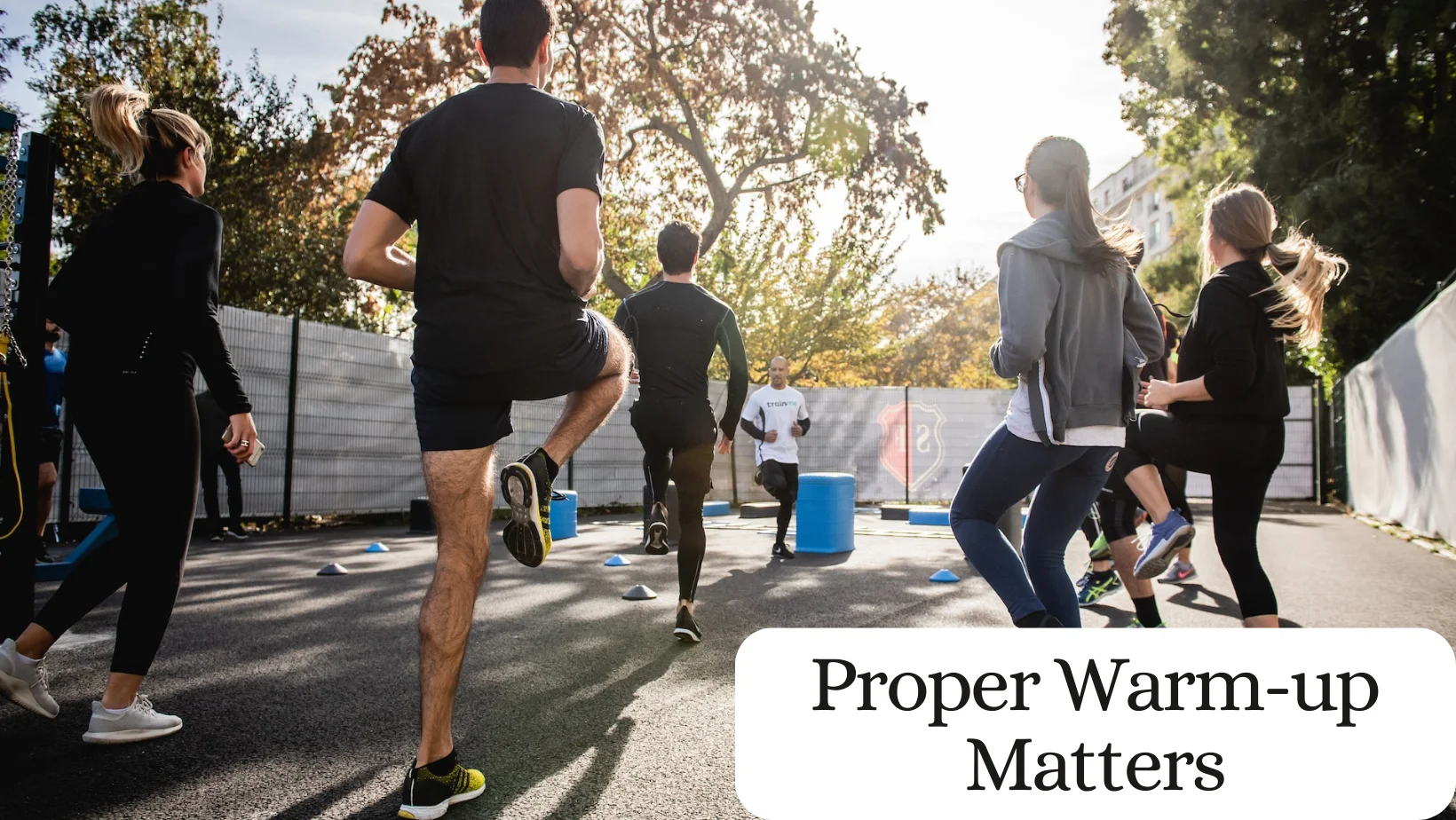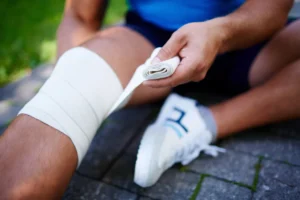Every athlete knows the thrill of pushing their limits in the pursuit of excellence. Yet, it’s equally important to prioritize the safety and longevity of your athletic journey. Today, we’re going to discuss a practice that bridges this gap – the art of the warm-up.
What is a Warm-up?
Fundamentally, a warm-up serves as a safeguard against potential sports injuries, much like a gentle wake-up call for your body before the main event. It consists of a series of straightforward exercises designed to ready your muscles, heart, and mind for the physical activity ahead.
Consider it the prelude that sets the stage for the main performance while helping protect you from sports injuries.
Benefits of a Proper Warm-up
Now, let’s dive into why a proper warm-up is worth your time and effort.
- Reducing the Risk of Injuries – If you’re about to sprint down the field for a soccer match, and you haven’t warmed up properly. Your muscles are tight, and your body is not ready for the sudden burst of activity. The result? You’re more susceptible to strains, sprains, and even more severe injuries like torn ligaments.
- Improving Muscle Flexibility – Have you ever tried to stretch a cold rubber band? It’s not very flexible, right? Well, your muscles are somewhat similar. Warming up increases blood flow to your muscles, making them more pliable and less prone to injury.
- Enhancing Blood Flow – During a proper warm-up, your heart rate gradually increases. This helps your body deliver oxygen and nutrients to your muscles more efficiently. When your muscles are well-nourished, they function better and are less likely to give in to stress.
- Boosting Performance – Think of your body as a car. Would you start racing a cold engine? Of course not! Warming up revs up your “engine,” making you perform at your best. Your reaction time, agility, and overall performance improve significantly.
How to Warm-up Effectively
Let’s get practical now. How do you warm up effectively? Here’s a step-by-step guide:
- Start with Light Cardio Exercises – Begin with gentle movements like brisk walking, slow jogging, or easy cycling for about 5-10 minutes. This gets your heart rate up gradually.
- Move to Dynamic Stretches – Dynamic stretches involve active movements. For example, leg swings or arm circles. These help improve your range of motion and flexibility. Do each stretch for about 10-15 seconds, 5-8 times.
- Include Sport-Specific Movements – If you’re heading for a specific sport or activity, incorporate movements that mimic what you’ll be doing. For instance, if you’re a tennis player, practice some light swings before hitting the court.
- Gradually Increase Intensity – As you warm up, gradually increase the intensity of your movements. This primes your muscles for the upcoming challenges. For example, if you’re preparing for a sprint, start with a slow jog and then build up to a faster pace.
Real-Life Examples
I’ve seen countless cases in my practice where athletes who took warm-up seriously reaped the benefits. One particular story stands out. A dedicated young runner came to me with recurring shin splints.
After assessing her warm-up routine, I noticed she was skipping it altogether. I emphasized the importance of a proper warm-up, and she soon saw a significant reduction in her shin splint issues.
On the other hand, another athlete, a beginner, didn’t fully appreciate the importance of warm-up and routinely skipped it. Sadly, he experienced a hamstring injury that left him sidelined for several months. This example highlights the real-world repercussions of neglecting warm-up exercises, especially for those who are just starting their athletic journey.
Common Mistakes to Avoid
Now, let’s discuss some common mistakes athletes often make while warming up. Avoiding these can greatly improve your performance and safety.
- Skipping Warm-up Altogether – Some athletes rush and skip the warm-up, thinking they can go directly into their activity. This can lead to problems.
- Rushing Through It – Warm-up should be gradual and not rushed. Quick stretches and a brief jog won’t cut it.
- Neglecting Dynamic Stretches – Dynamic stretches are often underrated, but they’re crucial for flexibility and injury prevention.
Tailoring Warm-up to Your Sport
Tailoring your warm-up to suit your particular sport is like creating a customized plan. It can have a significant impact on your performance. For instance, if you’re a golfer, including gentle swings to prepare your upper body is crucial. Conversely, if you’re a basketball player, focusing on leg stretches and agility exercises can enhance your game.
Staying Consistent
Lastly, let’s talk about consistency. Warming up shouldn’t be a sporadic event. It should be an integral part of your fitness routine. Whether you’re hitting the gym, going for a run, or playing a sport, make warm-up a habit. It’s not just about preventing injuries for a day; it’s about safeguarding your athletic journey for the long haul.
Conclusion
In conclusion, a proper warm-up is the unsung hero of sports injury prevention. It’s not a luxury; it’s a necessity. By dedicating a few extra minutes to warm up effectively, you’ll not only reduce your risk of injuries but also perform at your best.
As a sports chiropractor, I’ve witnessed the difference it makes in my patients’ lives. So, don’t skip that warm-up – it’s your ticket to a safer and more successful sporting experience.
Now that you understand the importance of a proper warm-up, I encourage you to integrate it into your daily athletic routine. Take the first step toward a safer and more rewarding journey in your sport. Your body will thank you, and your performance will reflect the care you invest in it.





